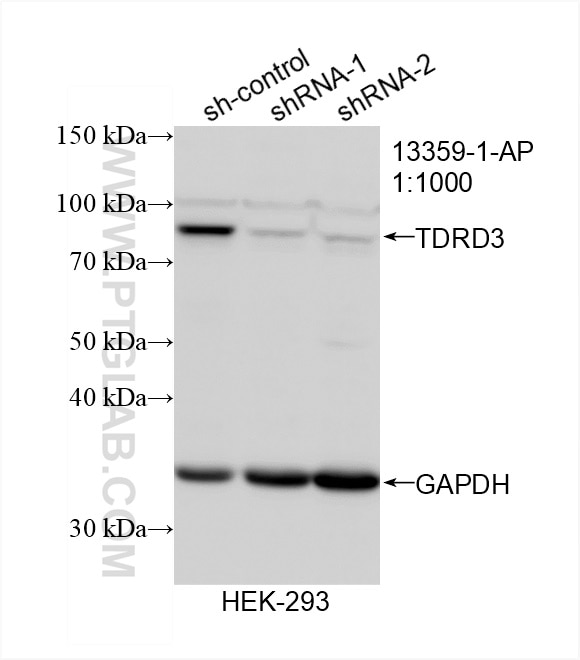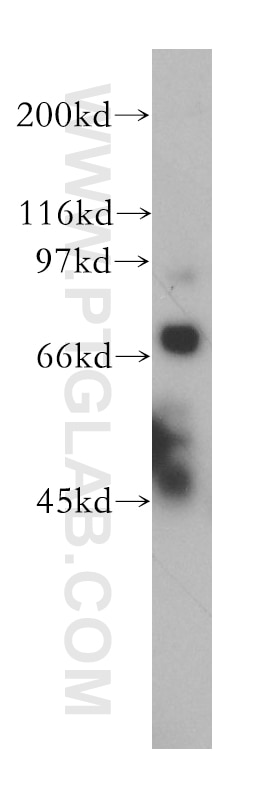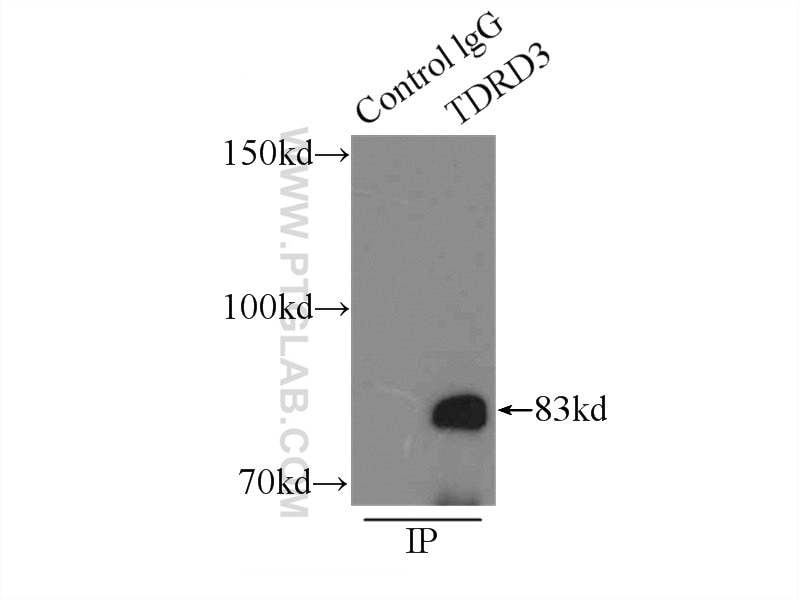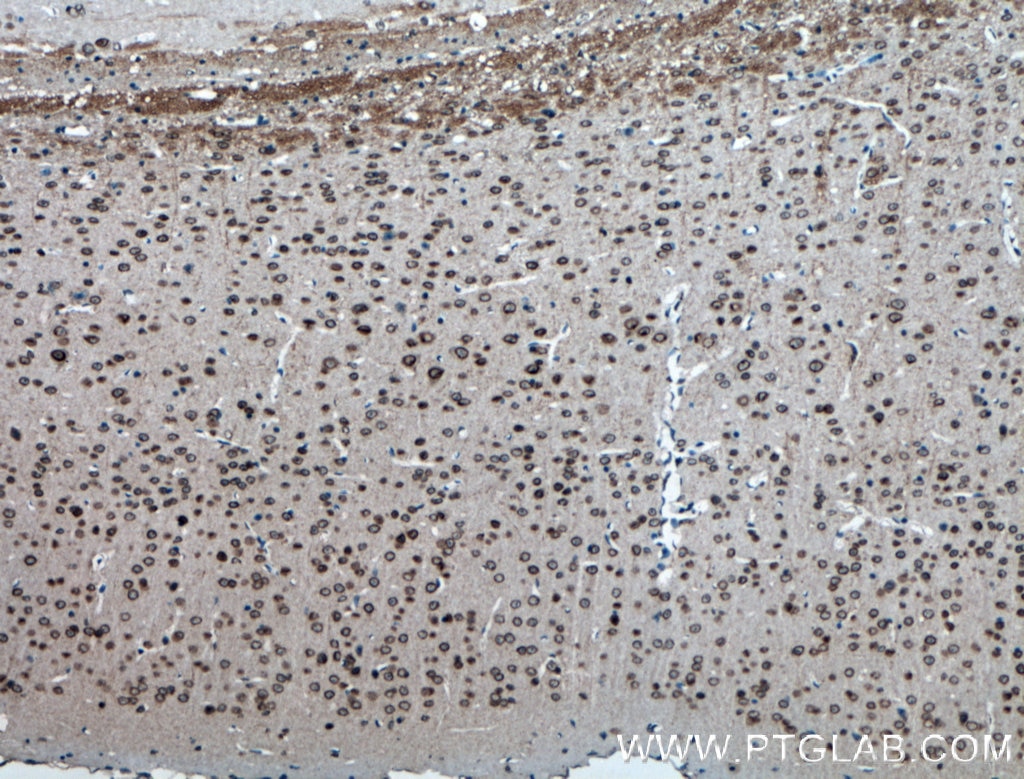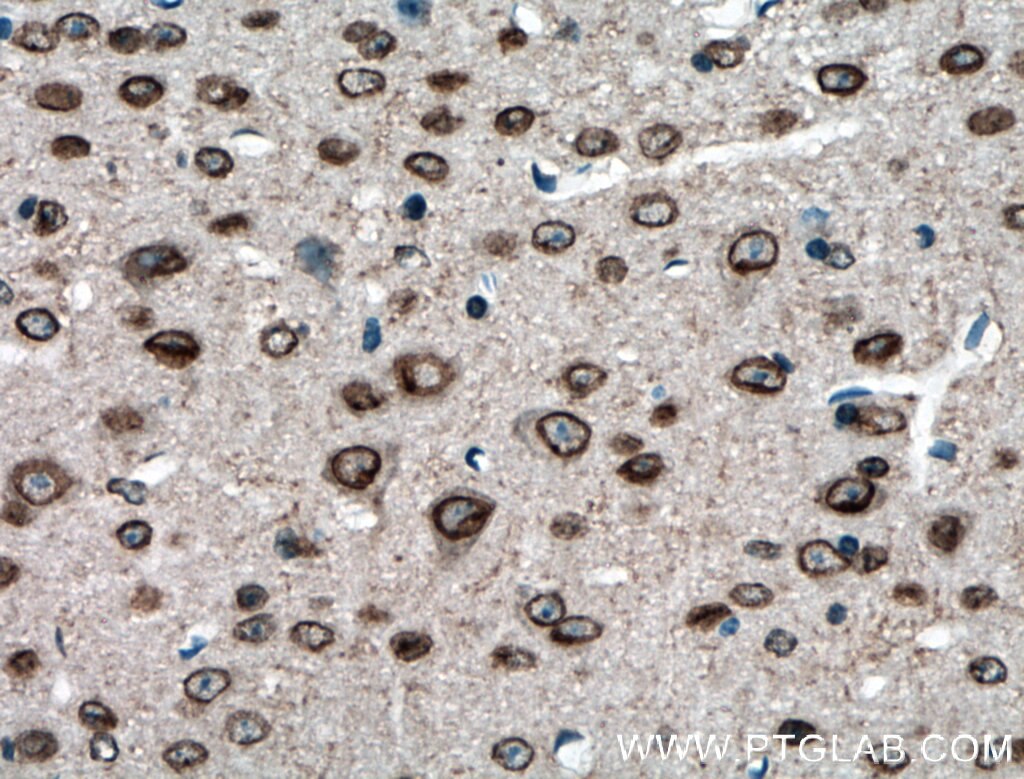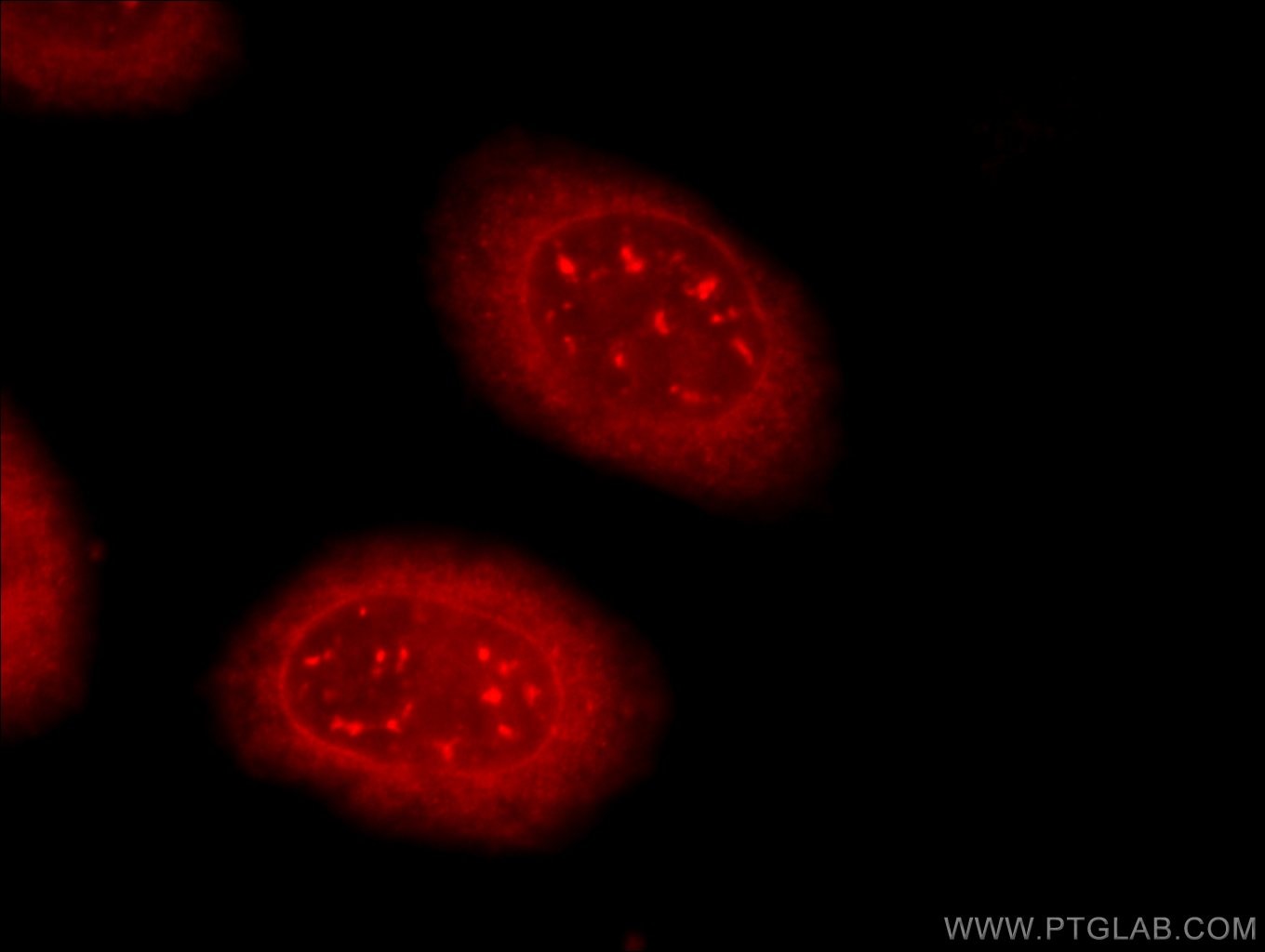- Phare
- Validé par KD/KO
Anticorps Polyclonal de lapin anti-TDRD3
TDRD3 Polyclonal Antibody for WB, IHC, IF/ICC, IP, ELISA
Hôte / Isotype
Lapin / IgG
Réactivité testée
Humain, rat, souris
Applications
WB, IHC, IF/ICC, IP, chIP, ELISA
Conjugaison
Non conjugué
N° de cat : 13359-1-AP
Synonymes
Galerie de données de validation
Applications testées
| Résultats positifs en WB | cellules HEK-293 |
| Résultats positifs en IP | cellules HeLa |
| Résultats positifs en IHC | tissu cérébral de souris, il est suggéré de démasquer l'antigène avec un tampon de TE buffer pH 9.0; (*) À défaut, 'le démasquage de l'antigène peut être 'effectué avec un tampon citrate pH 6,0. |
| Résultats positifs en IF/ICC | cellules HeLa |
Dilution recommandée
| Application | Dilution |
|---|---|
| Western Blot (WB) | WB : 1:500-1:2000 |
| Immunoprécipitation (IP) | IP : 0.5-4.0 ug for 1.0-3.0 mg of total protein lysate |
| Immunohistochimie (IHC) | IHC : 1:50-1:500 |
| Immunofluorescence (IF)/ICC | IF/ICC : 1:10-1:100 |
| It is recommended that this reagent should be titrated in each testing system to obtain optimal results. | |
| Sample-dependent, check data in validation data gallery | |
Applications publiées
| WB | See 1 publications below |
| ChIP | See 1 publications below |
Informations sur le produit
13359-1-AP cible TDRD3 dans les applications de WB, IHC, IF/ICC, IP, chIP, ELISA et montre une réactivité avec des échantillons Humain, rat, souris
| Réactivité | Humain, rat, souris |
| Réactivité citée | Humain |
| Hôte / Isotype | Lapin / IgG |
| Clonalité | Polyclonal |
| Type | Anticorps |
| Immunogène | TDRD3 Protéine recombinante Ag4174 |
| Nom complet | tudor domain containing 3 |
| Masse moléculaire calculée | 651 aa, 73 kDa |
| Poids moléculaire observé | 73 kDa, 83 kDa |
| Numéro d’acquisition GenBank | BC030514 |
| Symbole du gène | TDRD3 |
| Identification du gène (NCBI) | 81550 |
| Conjugaison | Non conjugué |
| Forme | Liquide |
| Méthode de purification | Purification par affinité contre l'antigène |
| Tampon de stockage | PBS with 0.02% sodium azide and 50% glycerol |
| Conditions de stockage | Stocker à -20°C. Stable pendant un an après l'expédition. L'aliquotage n'est pas nécessaire pour le stockage à -20oC Les 20ul contiennent 0,1% de BSA. |
Informations générales
TDRD3 (Tudor domain-containing protein 3) contains tudor domain which is an approximately 60-amino acid structure motif. TDRD3 functions as a scaffolding protein that specifically recognizes and binds dimethylarginine-containing proteins. TDRD3 is a transcriptional coactivator that promotes transcription by binding methylarginine marks on histone tails. TDRD3 also possesses an oligosaccharide/nucleotide binding fold and an ubiquitin associated domain capable of binding tetra-ubiquitin, and it is reported to associate with polyribosomes in HeLa cells.
Protocole
| Product Specific Protocols | |
|---|---|
| WB protocol for TDRD3 antibody 13359-1-AP | Download protocol |
| IHC protocol for TDRD3 antibody 13359-1-AP | Download protocol |
| IF protocol for TDRD3 antibody 13359-1-AP | Download protocol |
| IP protocol for TDRD3 antibody 13359-1-AP | Download protocol |
| Standard Protocols | |
|---|---|
| Click here to view our Standard Protocols |
Publications
| Species | Application | Title |
|---|---|---|
Theranostics A hypermethylation strategy utilized by enhancer-bound CARM1 to promote estrogen receptor α-dependent transcriptional activation and breast carcinogenesis. | ||
Int J Biol Macromol PRMT1 and TDRD3 promote stress granule assembly by rebuilding the protein-RNA interaction network |
